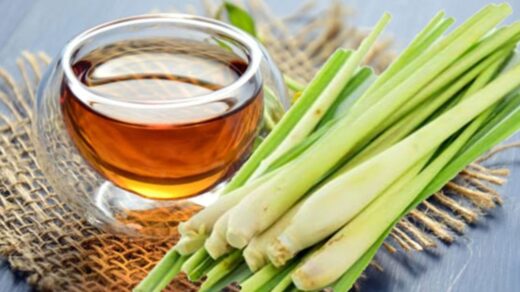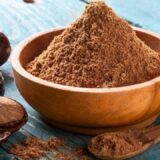Ayurvedic Diet: Eat These 10 Foods Everyday To Live Longer
The word Ayurveda itself is defined as the “science of life” means promoting longevity by various means such as a daily diet plan, physically art of living healthy lifestyle. According to Ayurveda principle that the root cause of all health problems is nourishment. In other ways, it says, “We are what we eat” it’s a principle that has been carried out religiously by Ayurveda.

Following Ayurveda principles is not an easy task as there are varieties of fact of elements that involve the science and composition of food, structure, pathology, physiology, diagnostic systems and therapy strategies for particular health and medical conditions.
In Ayurveda, diet is designed completely to balance the body intellectually, emotionally and physically strong in short; it’s all about balance. According to Ayurveda, there are three energies in every person’s body. When all the three energies are in balance, the person will be mentally calm and peaceful. They will enjoy a happy life with content of physically strong, disease free and slim.
Longevity Food List
Over here are some fundamental and necessary Ayurvedic diet tips that will help you to reform at least one big aspect of your life that is eating and digestion. Making minor changes and eating this diet daily can help a lot in the long run.In spite of the fact, Ayurvedic diet and lifestyle, suggestions are depended on the specific charter.
Below are the diets that are primary in his or her life, so these diets are principles that apply to everyone. According to Ayurveda, the system of digestion is part of the Pitta or fire energy in one’s life, and like any process, if it is to function well, you must give it the right conditions.
1.Rock Salt (Saindhava Lavana)
Rock salt is commonly known as Sendha namak or Saindhava lavana. It is partly sweet in taste and considered best among all salts. It is also recognized as sodium chloride or land salt and is large-grained rough salt. Most of the salt generally increases pitta, but Saindhava Lavana, being cold in potency it helps to balance Pitta.
It is one of the rare materials that balance all the three Doshas. Ayurveda text advised this salt for daily use, as its properties are more advantageous to health, which is quite different from regular salt. Regular use can benefit in many ways such as weight loss; salt reduces sugar cravings by reactivating insulin and also helps in weight loss.
It controls the level of melatonin, which can help in peace full sleep. It can be helpful to treat and manage stress and anxiety by using it as a relaxing bath with rock salt.
2.Jaggery (Guda)
Jaggery is also called Gur or Guda it is a traditional form of unrefined sugar derived from sugarcane juice. It is traditionally used in many Indian foods, Indian ritual and customs as well as in making various ayurvedic medicines. According to Ayurveda, jaggery has hot potency, which helps to produce heat within the body and secrete the bile from the liver and gall bladder.
Furthermore, eating 10 grams of jaggery provide16 mg magnesium, which is equal to 4% the daily magnesium requirement. Jaggery also decreases anxiety and swing’s mood it might be due to the release of endorphins, which is produced within the body after eating jaggery.
In addition to its sweet taste and sugar substitution, Jaggery has many health benefits and medicinal uses such as cleanses intestines, cleanses urinary bladder and urine, to relieve excess body weight, for urinary tract diseases, for fever, to strength digestion, and feaces.
3.Cow Milk (Godugdha)
Cow’s milk is considered to be the most beneficial among all animal’s milk. It is believed that it provides mental and physical stamina. Cow’s milk works as rejuvenator that boosts long life run. It is believed so because of its different nutritional values such as it is highly rich in calcium content that is essential for growth of body and bones.
Drinking one glass of cow milk provides 10.8% of the daily body’s need for potassium. It is useful in preventing the migraine headaches; it also reduces the PMS symptoms at the time of the luteal phase of the menstrual cycle.
4.Coriander (Dhania)
Coriander is a popular herb which is used in as the flavor agent, in snacks, stir-fries and breakfast items. It is usually known as dhania beside this as Dhana, Dhane and Kottamalli in other Indian parts. According to Ayurveda, coriander is an herb that relieves extreme thirst and excessive cold.
According to Ayurveda, it is useful for stomach-related ailments, as it had properties that soothe digestion. As it calms down the aggravated pitta, it is helpful for the people suffering from pitta worsening, which is caused due to excessive consumption of tea or coffee.
Apart from this, it is also useful in improving digestion, for relieving bad odor, vomiting, asthma, anorexia, hemorrhoids and worm plague.
5.Snake Gourd (chichinda)
Snake gourd is a vegetable that is well-known to the world for its taste, but additionally it is recognized as a curative vegetable in Ayurveda. According to Ayurveda text “Charaka Samhita,” it is an herb that relieves the feeling of food satiation and unnecessary thirst.
It is an herb with have anti-diabetic, anti-cancer, anti-inflammatory, mild analgesic and anti-cholesterol properties. Due to these qualities of value, it is useful in insomnia, arthritis, Alzheimer’s disease, diabetes and heart diseases.According to Ayurveda, it is an herb that is useful for the skin.
It helps to enhance complexion, pruritus, acne and urticarial. Besides this, it is moreover, helpful in skin diseases, burning sensation, purification of blood, cough and cold. It is a healthy food that balances Kapha along with Tridosha. In terms of vitamins, it has vitamin A, vitamin B, vitamin C and minerals such as magnesium, manganese, potassium, calcium, iodine, and iron.
6.Red Rice (Rakta Sahli)
According to Ayurveda text, Charaka Samhita Red rice (Raktashali rice) is considered as the best rice grain among all it has a property that balances all state’s kapha, pitta and vata very effectively. It has been in used for over 3,000 years and has been used for diuretic, eye-invigorating, spermatophyte, cosmetic, tonic and much more.
It is rich in antioxidants and mineral and can be used by different ways such a roast, soak, ferment or sprout. Eating 1/4-cup serving can provide 2 percent of your daily required iron value for health. Eating 1/4-cup serving can also provide 2 grams of fiber, which provide 8 percent of our daily value for fiber.
7.Fig (Anjeer)
Fig’s fruits are commonly known as Anjeer in India. It is a fruit that can be eaten fresh as well as in dried from. The Fresh fruit’s taste is lusciously sweet and crunchy seeds were as the dried fruit are sugary and chewy. According to Ayurveda fig’s increases Kapha but decreases Pitta Dosha.
In Ayurveda, Fig is referring to the fruit as Rajaoudumbara or Falgu, which is heavy to digest and have cold potency. It is loaded in fiber, which benefits in clearing out the growing cholesterol within the body. Figs have the good source of iron, so it is suggested to people suffering from iron deficiency, which result in anemia.
Besides this, Figs are also useful in treating warts; it’s due to anti-viral properties that are present in the milky sap of figs. Applying it on the warts twice a day helps to cure them.
8.Cow Milk’s Ghee (Goghruta)
Cow milk’s ghee is considered to be superior to all ghee’s that are made from different animal’s milk. Ghee made from cow’s milk is believed to be the best that has a nutritional value that doesn’t harm the body when eating. According to Ayurveda cow, ghee is full of essential nutrients like fatty acids, saturated fat and have antioxidants, antifungal, antibacterial and antiviral properties.
It has many benefits such as adding 1-2 teaspoon of ghee in a daily diet can help to reduce stubborn belly fat. It promotes longevity and protects the body from various diseases by stimulating digestion. It is recommended for those suffering from piles, fissure and fistula problems.
Besides this, it can also be helpful in relieving pain and burning sensation it is simple to use simply apply ghee on effective area. Besides this, it is moreover, useful for softening stool and to cure constipation problems.
9.Indian gooseberry (Amla)
Amla is one of the most significant herbs of Ayurveda it is used in making many formulations of ayurvedic medicine. It is an incredible fruit that contains many minerals and vitamins like Calcium, Vitamin B Complex, Phosphorus, Carotene, and Iron; it is also a powerful antioxidant agent.
Amla oil is popularly used in India for hair loss and baldness. It has been shown to reduce the chances of hair loss and baldness due to the carotene content of Amla. The iron content and general antioxidant properties also help to reduce hair loss.
According to Ayurveda text Charaka Samhita Amla can be used for various health ailments such as fortifies the liver, mental functioning, strengthens the lungs, enhances fertility, strengthens eyes, improves muscle tone, increases skin health and many more.
10.Almonds (Badam)
Almond is believed to be oldest and most popularly grown of all the nut crops. It can be used in varieties of ways such as whole almond seeds can be eaten raw or even roasted, almond oil can be used as massage oil for alleviating dryness in the skin and scalp hair.
It is aphrodisiacal in nature, and so it can help to strength and give stability to body tissues. It is one of the most regarded seeds in Ayurveda for its nutritional value. It has Vata pacifying effect and supports all the seven dhatus, particularly Shukra dhatu and the Ojas.
It is helpful in the formation of hemoglobin, new blood cells and plays an important role in maintaining smooth physiological functions such as heart, liver, nerves, brain and bones. It has a good source of protein and fat that is known to fight against cholesterol.


























Ayurveda principals are followed since ages and It has a good impact on people.The food listed above are very important and should have a proper intake by every body out there. Great work!!
Nice information about ayurveda diet .
One of the best information to all person in day to day life